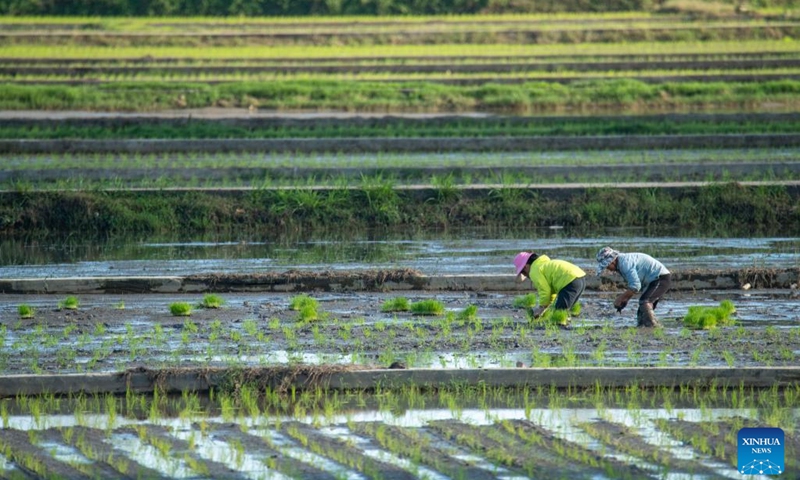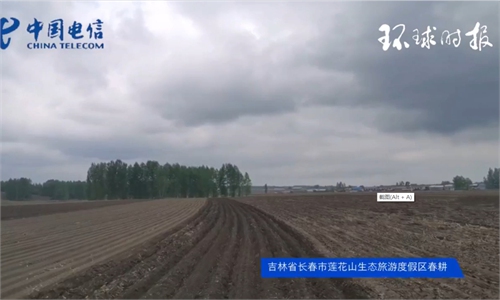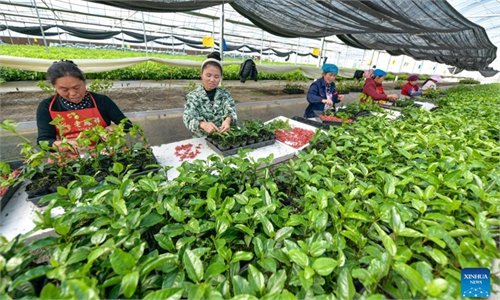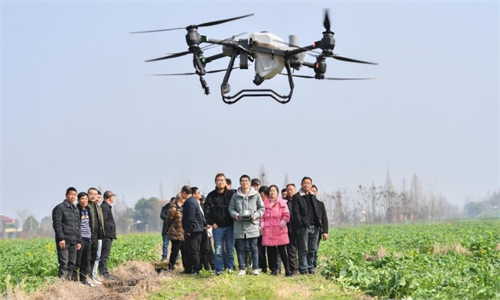
Farmers work in the field in Jiaji Town of Qionghai City, south China's Hainan Province, Feb. 19, 2023. In early spring, as temperatures gradually rise, farmers across the country are actively engaged in spring ploughing and preparations for farming activities.(Photo: Xinhua)
About 3.6 percent of the spring sowing across China has been completed, about the same pace as last year, the China Media Group reported on Sunday, citing data from the Ministry of Agricultural and Rural Affairs (MOA).
At 41.8 percent, the cultivation of rice seedlings is almost half finished, 4.3 percentage points faster than last year. Based on this result, 8.6 percent of the rice seedling transplanting has been completed, 1 percentage points faster than last year, MOA data showed.
"Spring sowing is the start and the fundament of the agricultural production, which has been given priority amid the country's development plan of securing certain basic supplies, including grain and vegetables," Jiao Shanwei, editor-in-chief of industry news website cngrain.com, told the Global Times on Sunday.
National forecasts point to 650 million tons of grain output in 2023, according to the Government Work Report that was delivered to the two sessions this year. The report also listed food security as one of the six key government tasks in 2023. China vowed to keep total grain planting area at a stable level and to launch a new drive to increase grain production by 50 million tons.
Jiao said that grain output volume of 650 million tons is based on experience, which is believed to meet domestic demand.
China is ramping up agricultural mechanization to enhance grain output and shore up food security. The seed industry and agricultural science, as well as technology and equipment, will be invigorated, the work report showed.
Central China's Hunan Province, one of the major grain-growing provinces, plans a concentrated rice seedling program in the 74 cities and counties under the jurisdiction of the province this year, which will implement an intelligent breeding program.
As of Thursday, the fertilizer deployment rate for spring planting was 80 percent completed among provinces, according to the MOA's latest monitoring data, 6.8 percentage points higher than last year, led by Northwest China's Xinjiang Uygur Autonomous Region, Qinghai Province and Ningxia Hui Autonomous Region.
In 2022, a heat wave hit China's southern provinces and caused regional droughts and lower grain output. "China still completed its annual grain output goal of 650 million tons in 2022, but we should still be aware of climate change," said Jiao.
He noted that there still might be extreme weather in 2023, and abnormally high temperatures have already been recorded in some places in China.
The current speed of 2023 spring planting is at the normal pace, but the speed of plating should also be coordinated with climate, and related authorities should make preparation for the impact of extreme weather this year, Jiao said.
Global Times



